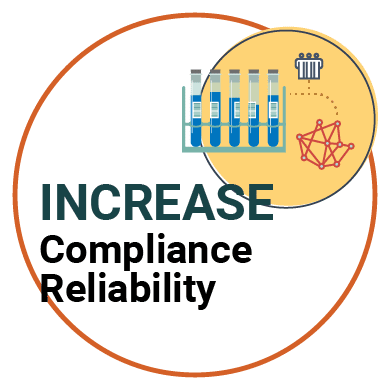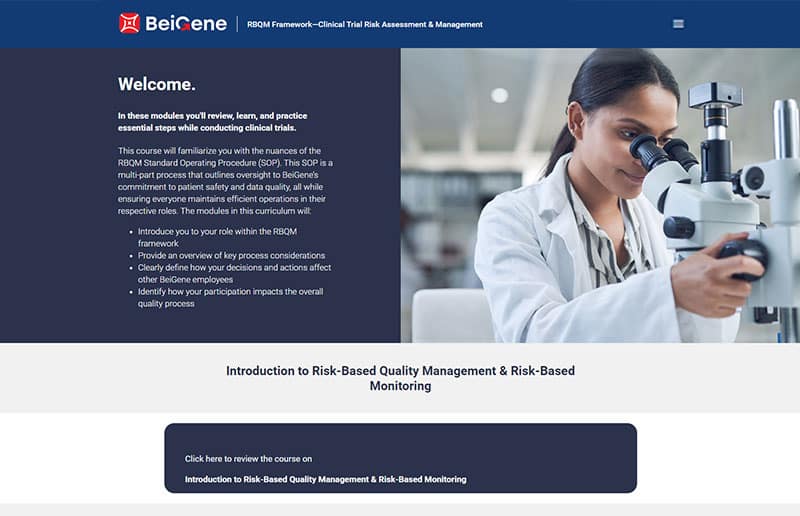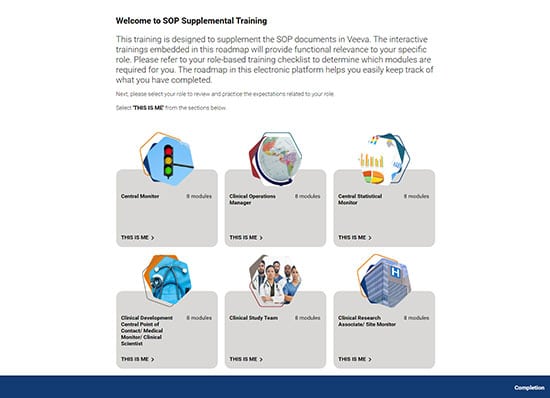BeiGene Empowers Clinicians to Manage Risk

How does an international biotechnology research company develop the learning solutions they need to empower their team of clinicians, medical professionals, scientists, and administrators to conduct clinical trial risk assessment and management activities?
BeiGene, an international company at the forefront of biotechnology research, is on the leading edge of developing solutions to treat cancer. They needed an innovative training solution that would prepare clinicians to use and adhere to their Risk Based Quality Management (RBQM) standard operating procedure during clinical trials. They needed to update their existing learning content, as well as to develop new learning solutions customized for multiple learning audiences of highly educated clinical professionals. The training solution had to integrate with their system and effectively ensure compliance with the process, quality assurance, and good decision-making and communication skills at each step.
- BIOTECHNOLOGY RESEARCH
- COMPLIANCE TRAINING
- NEEDS ANALYSIS
- PERFORMANCE CONSULTING
- INSTRUCTIONAL DESIGN
- CONTENT CURATION
- MOTION GRAPHICS
- VIDEO
- DESIGNLAB

SOLUTIONS
The team at AllenComm began with a Needs Analysis and Performance Mapping process to assure we would design and develop a customized training solution that centered the needs of learners to meet the goals and objectives set by BeiGene. We collaborated with the SMEs at BeiGene to build skills matrices by role that would link needed behaviors to performance outcomes, reviewed existing content, and used an iterative design process to ensure alignment between our teams.As a result, BeiGene’s completed learning solution included web-based training modules that could be integrated with their existing technology; media-enhanced resources to provide engaging, experienced-based training; micromodules to meet the needs of busy clinical professionals; customized landing pages with specialized navigation tools for each learning audience; and interactive elements to encourage active (rather than passive) learning to enhance memory, adoption, and compliance.
ANTICIPATED RESULTS
- Increased compliance adherence to the RBQM process with the goal to be 100% inspection-ready
- Improved collaboration and communication across roles when working cross-functionally
- Enhanced application of critical thinking to proactively identify and predict potential impact of actions while carrying out the standard operating procedure to reduce risk





